13. Skin Electronics¶
This week started off with Katia Vega's inspiring lecture where technology interacts with the skin, cosmetics and beauty products.
 { width=400 align=center }
{ width=400 align=center }
check out the global lecture here
References & Inspiration¶
I was fascinated by the electronic tattoos and their different applications on the skin to improve people's needs. It's amazing how technologu has evolved and I would like to know more about these projects for fututre designs.

Check out the full projects here:
- Duoskin the ‘duoskin’ research team believes that in the future, on-skin electronics will converge towards the user friendliness, extensibility, and aesthetics of body decorations, integrated to such an extent that the interface technology has apparently disappeared
Another interesting project by Carmel Majidi: Electronic Tattoos for Wearable Computing
Skin Sensor¶
Learning how to use the skin sensor

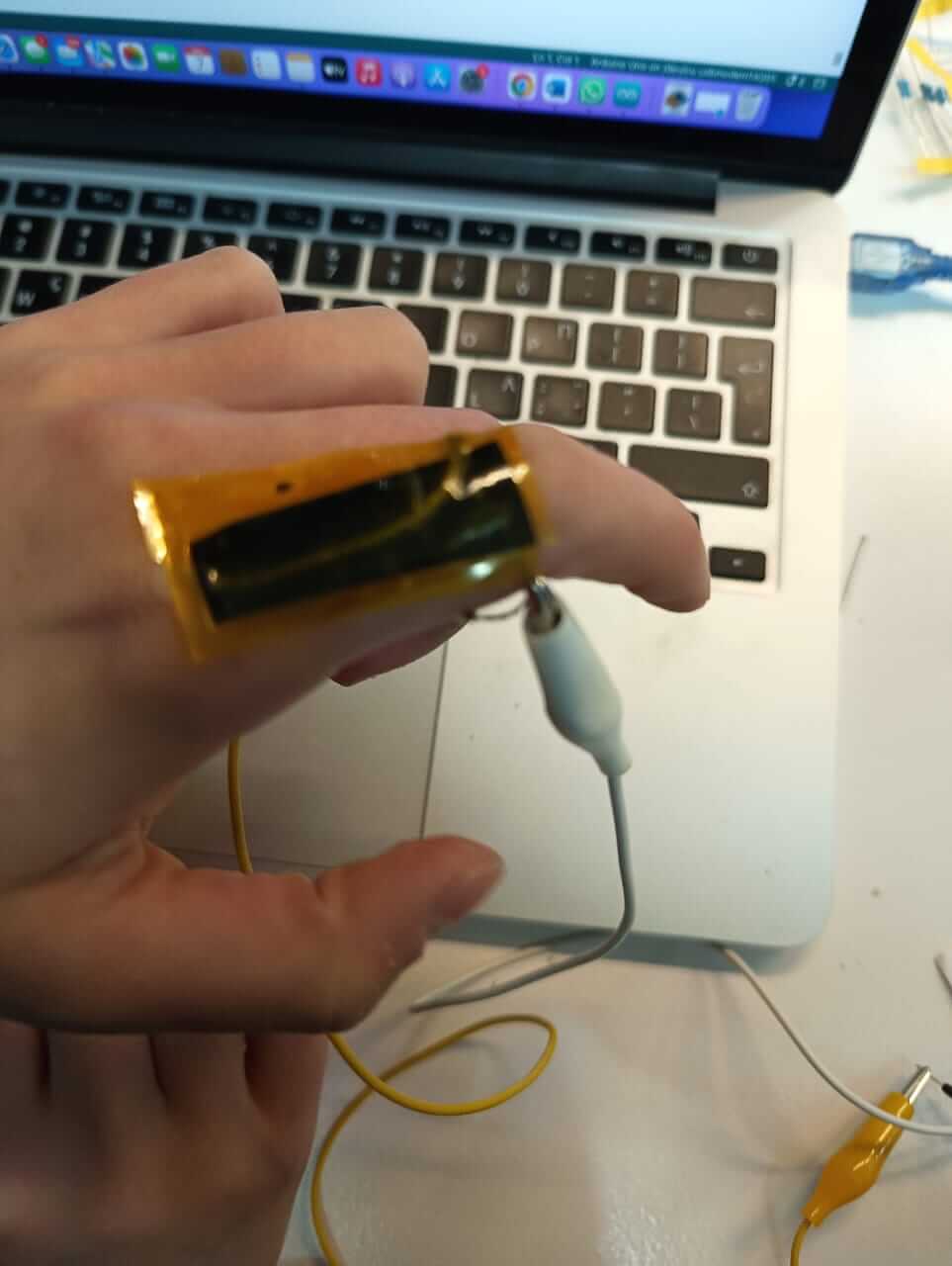
Materials
-
Skin-safe double sided tape
-
Conductive thread
-
Velostat/eontex
-
Kapton tape
Arduino Code¶
int sensorPin = A0; //select the input pinfor the potentionmeter
int sensorValue =0; // variable to store the value coming from the sensor
int pinD = 8;
int b = 0;
void setup() {
// declarethe ledPinas OUTPUT:
pinMode(pinD, OUTPUT);
pinMode(sensorPin, INPUT);
Serial.begin(9600);
}
void loop() {
// read the value from the sensor:
b=!b;//asigno el contrario
digitalWrite(pinD, HIGH);
sensorValue=analogRead(sensorPin);
Serial.println(sensorValue);
delay(500);
}
Matrix Sensor¶
Materials
- Arduino Uno-ESP32
- Velostat
- Copper tape
- Crocodile
- Jumper Wires
- Tape
check out the tutorial on programming a Matrix Sensor Matrix-karton and copper

Arduino IDE Code¶
// Adapted using a Xiao ESP32S3 by Roger Pibernat & Citlali Hernández 2023
/* The circuit:
3x3 Matrix using Copper Tape and Velostat
Each Analog Input + 220 Ohms Resistor // The resistor depends on the resistivity of the sensor
*/
#define numRows 3 // Constant variable
#define numCols 3
#define sensorPoints numRows* numCols
int rows[] = { A0, A1, A2 };
int cols[] = { 7, 8, 9 };
int incomingValues[sensorPoints] = {};
void setup() {
for (int i = 0; i < numRows; i++) { pinMode(rows[i], INPUT); }
for (int i = 0; i < numCols; i++) { pinMode(cols[i], OUTPUT); }
Serial.begin(9600);
}
void loop() {
for (int colCount = 0; colCount < numCols; colCount++) {
digitalWrite(cols[colCount], HIGH); // 5V
for (int rowCount = 0; rowCount < numRows; rowCount++) {
incomingValues[colCount * numRows + rowCount] = analogRead(rows[rowCount]); // read INPUT
} // end row Count
digitalWrite(cols[colCount], LOW); // set back to LOW 0V (-)
} // end colCount
// Print the incoming values of the grid:
for (int i = 0; i < sensorPoints; i++) {
Serial.print(incomingValues[i]);
if (i < sensorPoints - 1)
Serial.print("\t");
}
Serial.println();
delay(10);
}
}
Ideation¶
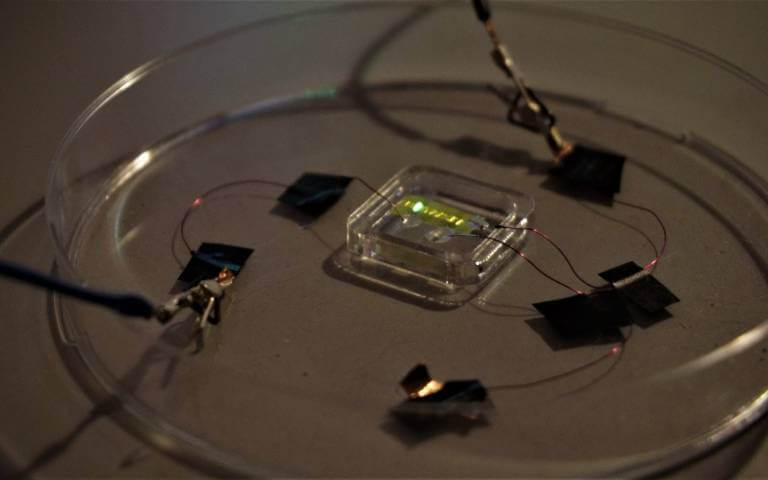
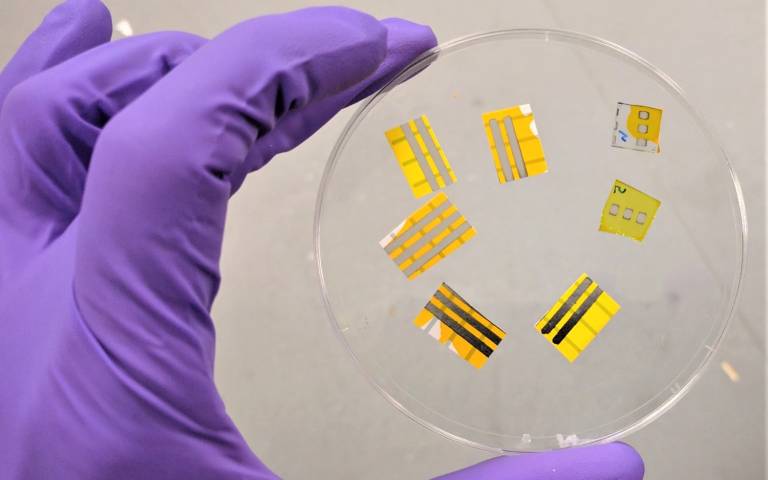
UCL SCIENTISTS & INSTITUTO ITALIANO DI TECHNOLOGIA
Tattoos are usually considered a form of personal expression, but a team of researchers in UCL and IIT have created the world’s first light-emitting tattoo based on OLED screen technology that, could also serve as a visible warning about potential health concerns.
Cancer patients undergoing radiation therapy are tattooed with small dots that are used as reference marks for precisely targeting the machines used for treatments during repeat sessions, for example.
There is new approach to light-emitting tattoos which is easier to apply, more practical, and temporary, without requiring surgery to have it removed.
-
The OLED'S(light-emitting diodes) used for this project are applied just like the water transfer tattoos. They could also be used in sportswear, fashion or even tatooed in packaging, as a signal of expiration.
-
OLED'S were first used in a flatscreen TV 20 years ago. They can be used on flexible, bendy surfaces, and can be made from liquid solvents. They are cheap.
Proccess¶
I wanted to create an interactive tatoo that would light up. So I decided to work with my own tattoo design and create a circuit on my skin.
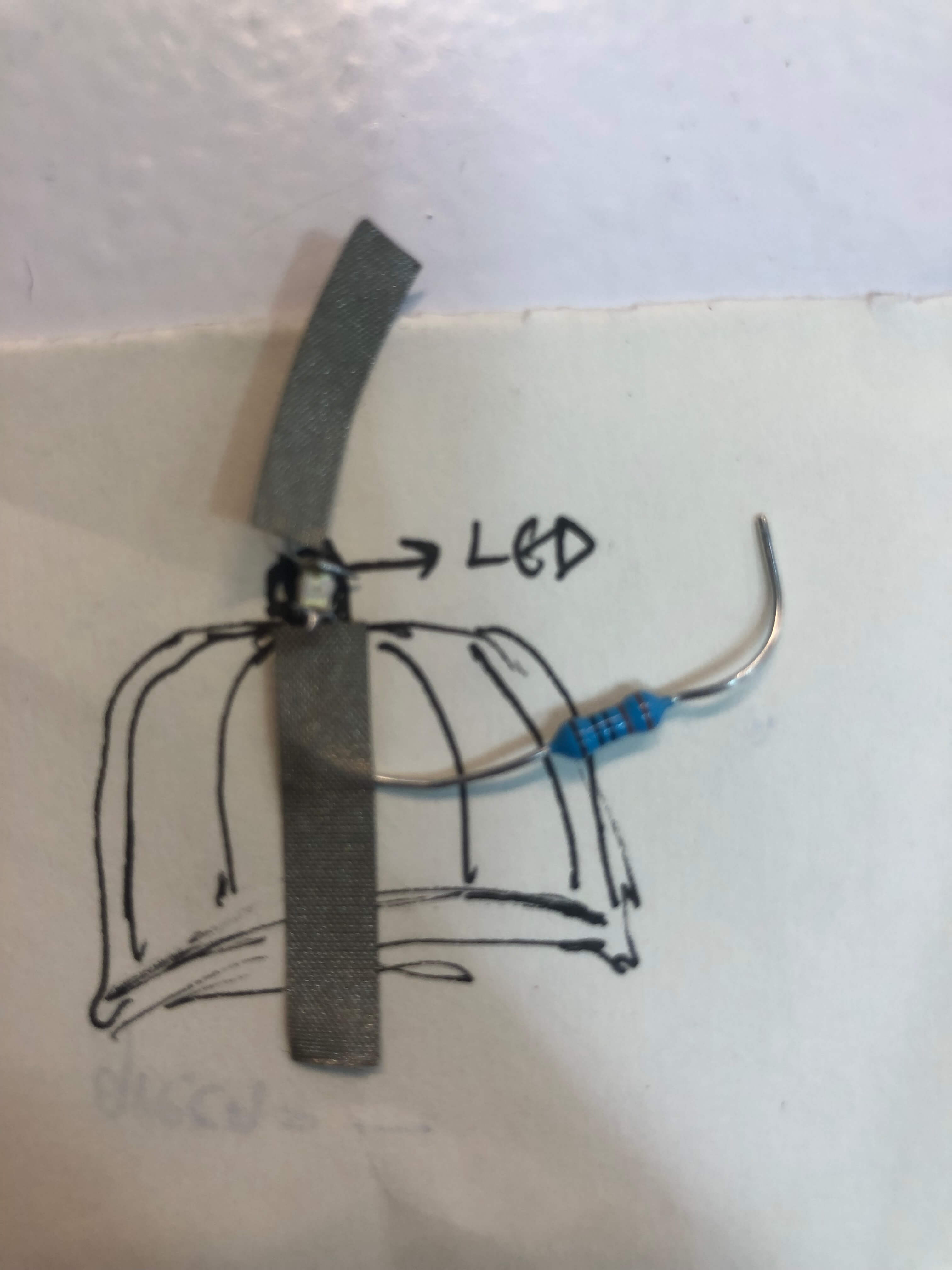
Tests¶
I tested that the LED work and all the connections
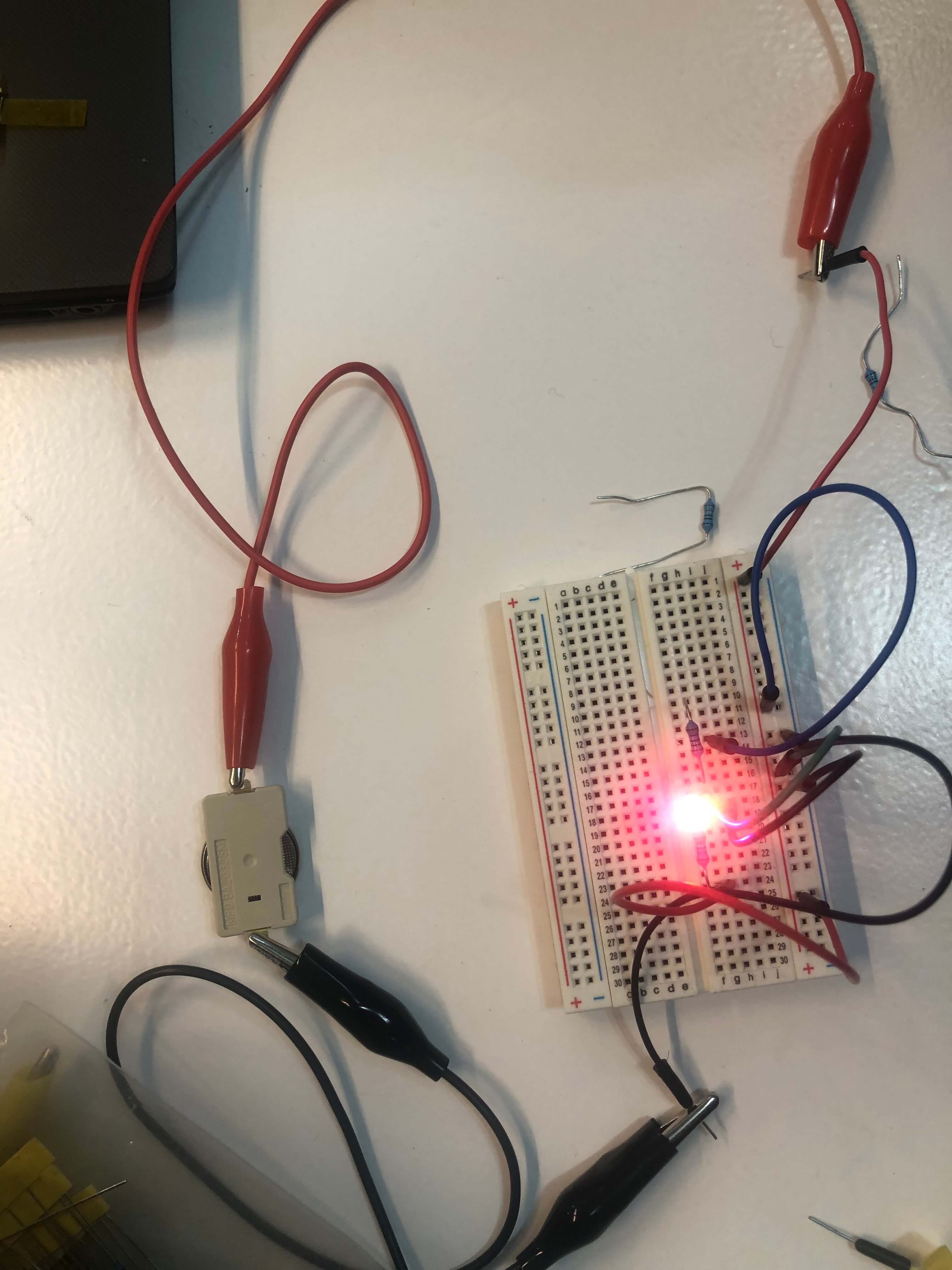
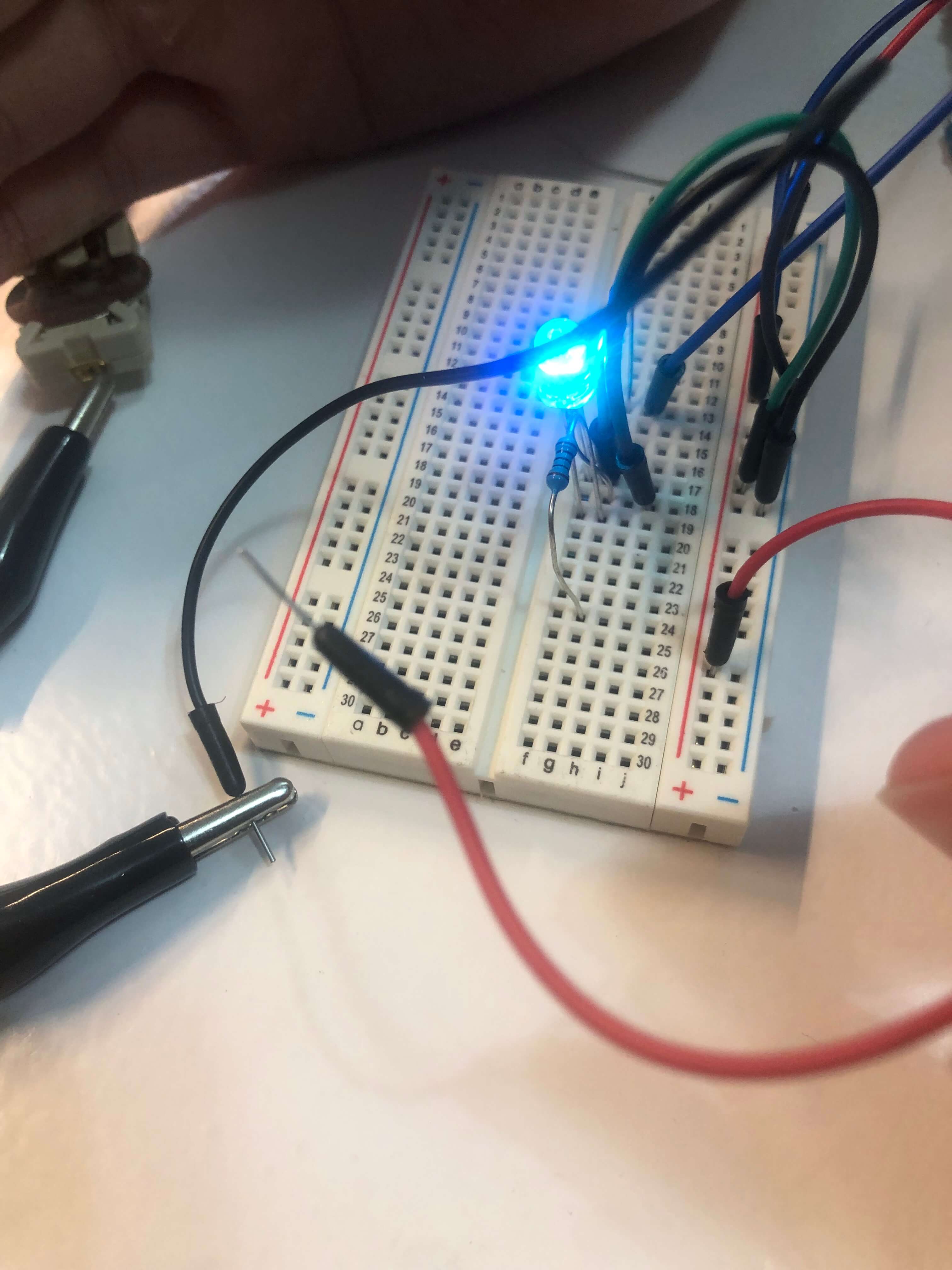
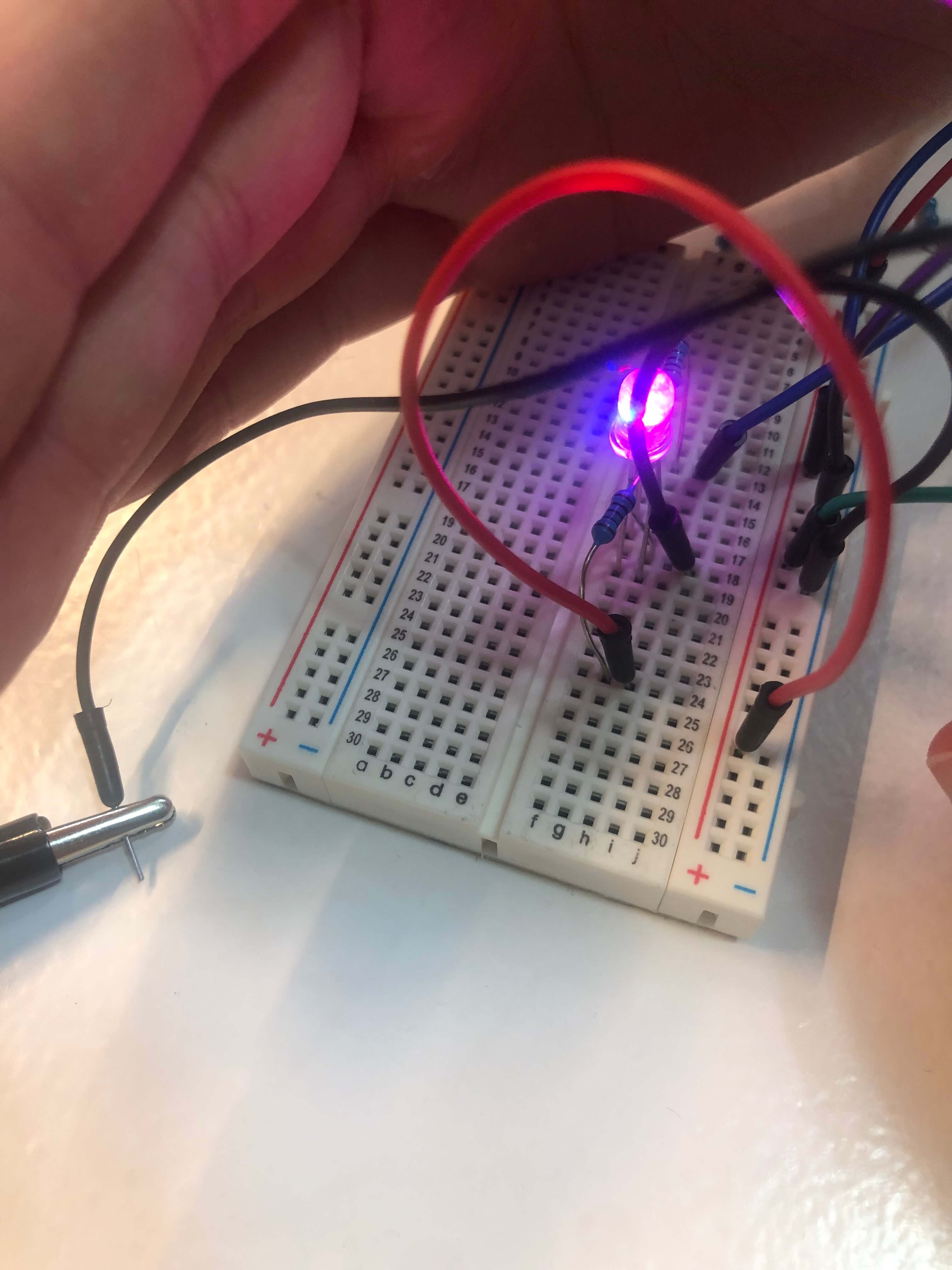
Construction¶
I tested the circuit to make sure all components are conductive with crocodile cables
Tools * coonductive tape * LED RGB * 3V Coin Battery * wires


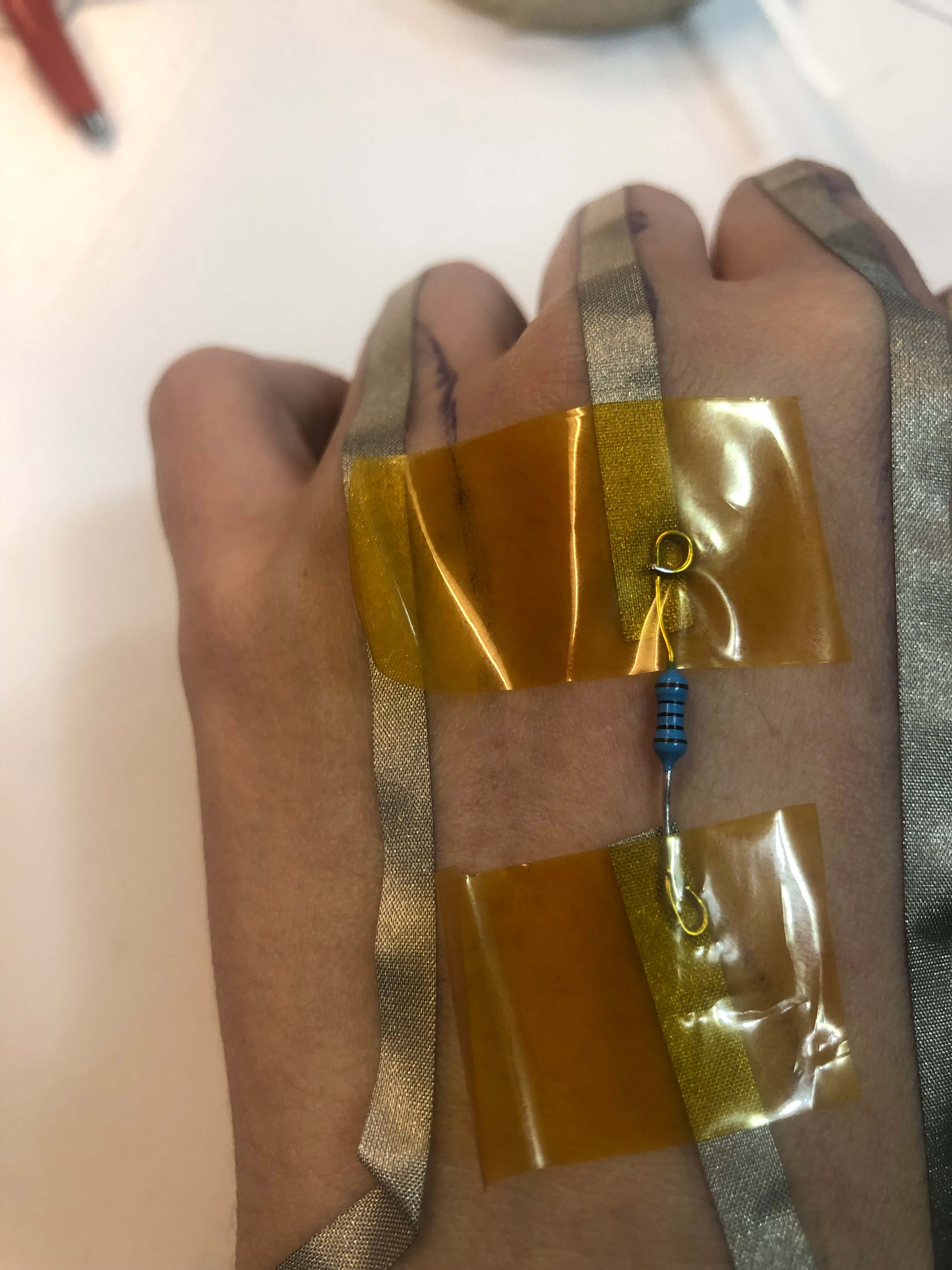
-
when placing the battery in the palm of the hand while the connection with the wires didn't light up the LED
-
also the resistors weren't neccessary for the connection
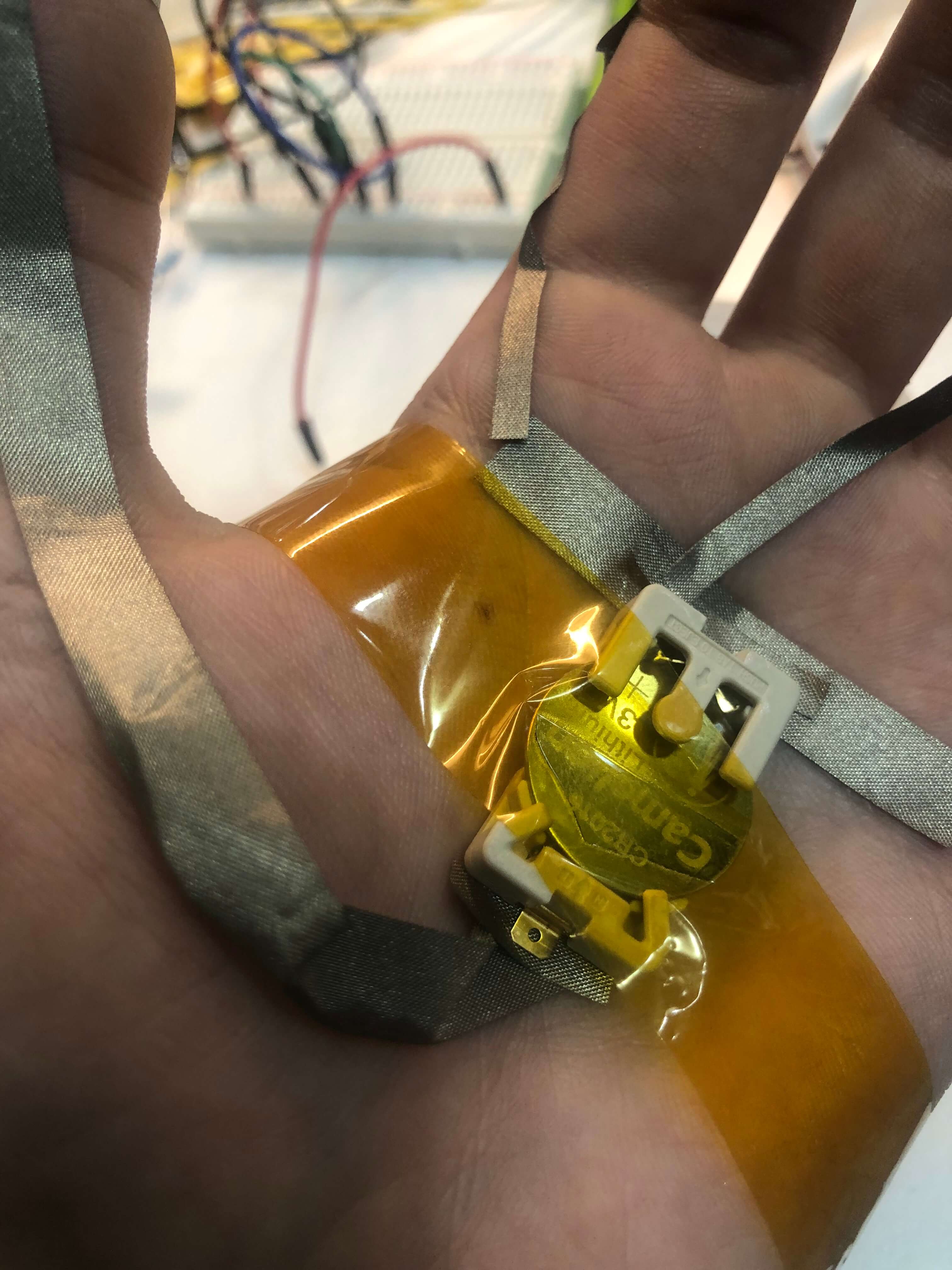

Results¶
- by placing the battery on the wrist and using more of the conductive tape to connect to the legs of the LED it did work

Video¶
Future¶
I would like to explore different designs and how to create different circuit connections and materials. Explore more Arduino programming.
Explore more applications based on that design to make people's life easier and research more about the underskin electric tatoos